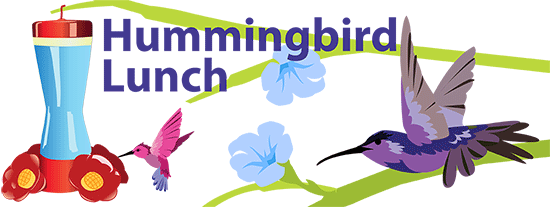
Illustrated by: Jo Ramirez, Sabine Deviche
In backyards all over the country we often get to see beautiful birds and hear their calls. One bird is a standout for its beauty, grace and elegance—the hummingbird. As you learned in the Hummingbirds story, they are often attracted to the red hummingbird feeders that we hang outside. But why? Would they be just as attracted to a white feeder? In this activity, you will set up feeders of different colors and measure how much nectar hummingbirds drink from the different feeders.
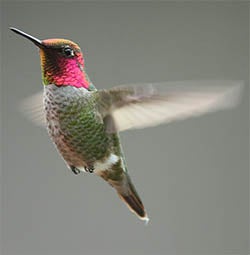
What You Need
- Four hummingbird feeders (exactly the same)
- Nectar (exactly the same for the entirety of the project)
- White paint that bonds to plastic
- Measuring cup (to measure volume)
- One permanent marker
- Four shepherds hooks (or another place to hang feeders)
- Two additional feeders if you want to control for effects of evaporation (especially important for hot climates—see step 7 of procedure)
Before you begin: Do an internet search of your state or town and "hummingbirds" to make sure at least one species of hummingbirds lives in your area (they are only found in the Americas).
Make sure to have one feeder outside for a week or two before you try the experiment so local hummingbirds will know they can get food in your school yard. The time before they notice it may vary.
Read the Hummingbirds story to make sure you are familiar with what and how hummingbirds eat, as well as the importance of color to this type of bird.
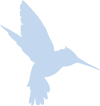 Watch the video on the hummingbird vision and color page and make 5-7 observations. Look at what the hummingbirds are doing, and write down interesting things that you noticed. If students have a feeder in their yard with hummingbirds that come to eat, they can observe that as well.
Watch the video on the hummingbird vision and color page and make 5-7 observations. Look at what the hummingbirds are doing, and write down interesting things that you noticed. If students have a feeder in their yard with hummingbirds that come to eat, they can observe that as well.
A good place to record your observations would be a science notebook. This will help you keep your thoughts and ideas in one spot.
Once you have at least 5-7 observations, come up with some related questions. See the table below for two examples.
| Observations | Questions |
| Red feeder | Are hummingbirds attracted to red feeders? |
| Lots of hummingbird species feeding | What hummingbirds are in my area? |
Procedures
- Gather all materials. Wash and dry your feeders with hot water and make sure they hold water without leaking.
- Using the white paint, paint the red parts of only two of the feeders to make them white. Allow them to dry.
- Using the appropriate tool to measure the volume of liquid (mls or cups), place a small, predetermined amount of water in your feeder.
- Once you have put the small amount of water in the feeder, place the feeder
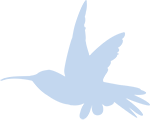 upright. Using the marker, place a dash on the plastic with the amount of liquid written. Continue doing this in even increments to make a scale on the side of the feeder. Repeat this step on all four feeders.
upright. Using the marker, place a dash on the plastic with the amount of liquid written. Continue doing this in even increments to make a scale on the side of the feeder. Repeat this step on all four feeders. - Repeat these steps on all four feeders.
- Fill one red and one white feeder with nectar. Mark the bottom or very top for easy recognition.
- Fill one red and one white feeder with water. Mark the bottom or very top for easy recognition. The water-filled feeder will help you determine whether it is the red feeder that attracts the birds, or a combination of the feeder and the nectar. Place the feeders in your predetermined location. (Note: if your resources allow, you can use additional feeders in a non-accessible location—one that has similar temperature and air flow—to test for effects of evaporation. This will be especially useful in hot climates. Measure the amount of water that evaporates from your non-accessible feeder and subtract that from changes in your accessible feeder. Controlling for evaporation will be most important for the feeder with only water, but is useful for the nectar feeder as well.)
- Check on the amount of liquid in your feeders every day or every few days (just keep it consistent). Continue this experiment for a few weeks. Use a table to organize your data that you collect.

After You Do the Experiment
Analyze your data: What trends have you noticed? Are the hummingbirds drinking nectar from one feeder more than the other? What data do we have to support this?
Communicate your results. Pick a format of your liking and communicate your results. Be sure to consider the role, the reader and the effective communication of the results. (Choose from: newspaper article, formal written scientific paper, or an online media source-blogs; see Teaching Tips for more information.)
Virtual Hummingbird Feeder
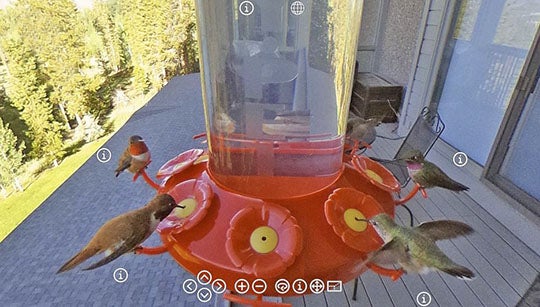 | ||
| View with Computer | View with Smart Phone | View with Goggles |
As you explore this hummingbird feeder, take notes on the types of hummingbirds, you find. Here are a few questions to get you started. Also try making up your own set of questions.
- How many hummingbirds can you find?
- How many species of hummingbirds did you find?
- How are they different?
Learn more about these tiny birds and other birds that live in the southwest United States using our Bird Finder tool.
Amanda Sibley is a graduate of the Mary Lou Fulton Teachers College at Arizona State University. She teaches 8th grade at Kino Jr. High in Mesa Arizona.
Virtual Hummingbird Feeder by CJ Kazilek. 360 VR image taken in Keystone Colorado.
Read more about: Hummingbird Lunch
Bibliographic details:
- Article: Hummingbird Lunch
- Author(s): Amanda Sibley
- Publisher: Arizona State University School of Life Sciences Ask A Biologist
- Site name: ASU - Ask A Biologist
- Date published:
- Date accessed:
- Link: https://askabiologist.asu.edu/experiments/hummingbird-feeder
APA Style
Amanda Sibley. (). Hummingbird Lunch. ASU - Ask A Biologist. Retrieved from https://askabiologist.asu.edu/experiments/hummingbird-feeder
Chicago Manual of Style
Amanda Sibley. "Hummingbird Lunch". ASU - Ask A Biologist. . https://askabiologist.asu.edu/experiments/hummingbird-feeder
Amanda Sibley. "Hummingbird Lunch". ASU - Ask A Biologist. . ASU - Ask A Biologist, Web. https://askabiologist.asu.edu/experiments/hummingbird-feeder
MLA 2017 Style

This activity has a companion article Hummingbirds that talks about hummingbird ecology.
Be Part of
Ask A Biologist
By volunteering, or simply sending us feedback on the site. Scientists, teachers, writers, illustrators, and translators are all important to the program. If you are interested in helping with the website we have a Volunteers page to get the process started.
